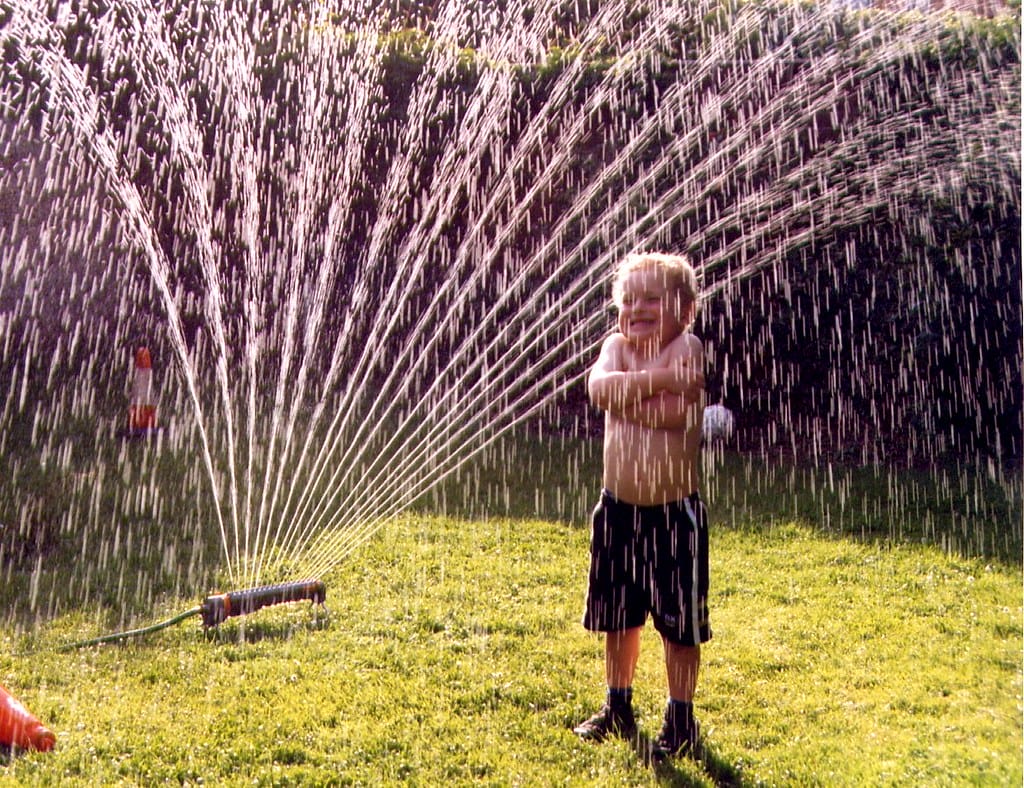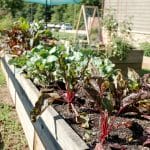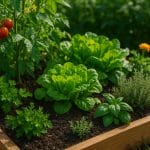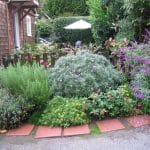How to Water Your Garden When Temps Reach Triple Digits
How To's In The Garden Watering

There’s hot, and then there’s garden-melting hot. I’m talking about the kind of heat that makes the hose feel like a stovepipe by noon, where stepping outside feels like opening the oven mid-bake. If you’ve lived through a few summers like that, you know—triple-digit heat doesn’t just test the plants. It tests you.
I learned the hard way. One summer, I thought I could keep my young avocado tree alive with the same routine I used in spring. Morning splash, light mulch, cross my fingers. Two days into a heatwave, the leaves curled up like they’d had enough of this world, and the topsoil baked so hard I could’ve used it as patio tile.
If you’re wondering how to keep your garden alive—and maybe even thriving—when the mercury spikes, here’s what’s worked for me. Not textbook advice. Just good, lived-in, dirt-under-your-fingernails kind of stuff.
First Rule: Water Early, and I Mean Early
If you’re not watering before 8 a.m., you’re already late. The plants don’t need coffee, but they sure need a deep drink before the sun gets mean.
Morning watering lets moisture soak into the soil before it evaporates or cooks off. Evening might seem tempting, especially when it’s cooler out—but it invites fungus and mildew, especially if you’re watering the foliage. You don’t want damp leaves sitting overnight.
I’ve set up timers on my drip lines just to beat the sun. Five-thirty a.m., like clockwork. Not fancy, just functional.
Deep, Slow, and Infrequent Beats Light and Frequent
Hot weather makes us reach for the hose more often—but hold on. Shallow watering teaches plants to keep their roots near the surface. And when that top layer turns into sun-scorched powder? Those roots get fried.
Instead, go deep. Water slowly so the moisture can really sink in. I usually let my drip system run for 30 to 60 minutes, depending on the plant and the soil. For beds, that means a couple times a week. For containers, maybe more often—but still deeply.
If you’re using a hose, let it trickle at the base for a while. Not just a quick spray and go. Think of it like marinating, not flash-frying.
Mulch: Your First Line of Defense
Mulch is like giving your soil a nice wide-brimmed hat. It shades the roots, keeps moisture from evaporating, and helps keep the soil temperature bearable.
I use wood chips, straw, even dried grass clippings if I’m out of the good stuff. About 2 to 3 inches deep—enough to insulate, not smother.
For my raised beds and younger fruit trees, I’ll tuck mulch around but leave a little breathing room around the trunk or stem. Otherwise, you might invite rot or critters.
Cover the Vulnerable (Especially the Young Ones)
Some plants just can’t handle full sun when it’s 105° and rising. Seedlings, young trees, delicate herbs—if they look droopy by 11 a.m., it’s time to give them some shade.
I’ve used everything from old bed sheets draped over tomato cages to actual shade cloth clipped to bamboo stakes. Even cardboard boxes, flipped on their sides in a pinch.
My young avocado tree? I baby that thing when temps hit the hundreds. A little afternoon shade makes the difference between crispy leaves and healthy new growth.
And here’s a tip: move containers under dappled shade during heatwaves if you can. Potted plants are like dogs in hot cars—they overheat fast.
Adjust Your Expectations (and Maybe Your Planting Schedule)
Triple-digit weather isn’t the time to plant lettuce or baby spinach unless you enjoy watching them bolt into the great unknown. Even heat lovers like tomatoes and peppers can stall in extreme temps.
That’s okay. Let the garden rest a bit. Focus on keeping what you’ve got healthy, not adding new stress.
I usually stop planting anything new by mid-June unless I’m putting in heat-hardened starts. Fall’s a better bet for cool crops anyway, and sometimes skipping a week or two of planting saves a whole season of frustration.
Watch for Signs of Heat Stress
Plants talk if you know how to listen.
- Wilting in the morning? That’s serious—time to water.
- Wilting in the afternoon? That’s often just heat stress. They might bounce back by evening.
- Brown edges on leaves? Could be salt buildup or shallow watering.
- Yellowing? Could mean roots are cooking or not getting enough air.
I check the soil with my finger. If it’s dry 2 inches down, it’s time. If it’s wet and still wilting? Then it might be time to rethink sunlight or airflow.
Don’t Forget the Soil
In extreme heat, the biology underground slows down. If you’ve been building up good soil, you’ve already got a buffer—but if your beds are tired or compacted, heat hits harder.
This is when compost really shines. Even a little compost blended into the top few inches helps hold water better and feeds the microbes that keep everything humming along.
I’ve also experimented with worm castings around the root zones of stressed plants. They’re like slow-release boosters—gentle but effective.
Bonus: A Few Water-Smart Tricks I’ve Picked Up
- Sunken basins around trees: Helps direct water right to the roots instead of letting it run off.
- Ollas or buried clay pots: Slow-release watering for small garden spots. Great for tomatoes.
- Reuse greywater: From the shower or sink (if it’s clean and non-toxic). Not for edibles, but great for ornamentals.
- Hydrophobic soil? Sometimes heat bakes the soil so hard it repels water. Loosen the top with a fork or rake before watering so it can soak in.
When the Heat Breaks, Don’t Let Up Immediately
Just because temps drop into the 90s doesn’t mean your soil’s recovered. Stay consistent a few days longer before easing back. Sometimes the damage happens after the heatwave when roots are still reeling and we’ve already dialed down the care.
I’ve lost more than one healthy-looking pepper plant this way—revived during the heat, then let slide too early. Rookie mistake.
FAQ: Garden Watering in a Heatwave
Q: What time of day should I water during extreme heat?
Early morning—ideally before 8 a.m.—is best. It gives roots time to absorb moisture before the sun gets intense.
Q: How often should I water in triple-digit temperatures?
It depends on your soil and plant type. Deep watering 2–3 times a week is better than daily shallow watering. Check soil moisture 2 inches down.
Q: Can I water in the evening?
Only if absolutely necessary. Evening watering can promote fungus and mildew. If you must, water the soil—not the leaves.
Q: Should I cover my plants during a heatwave?
Yes—especially seedlings, young trees, or sensitive plants. Use shade cloth, old sheets, or any breathable cover that blocks midday sun.
Q: What’s the best mulch for hot weather?
Wood chips, straw, or shredded bark all work. Aim for 2–3 inches deep. Mulch helps keep roots cool and prevents water from evaporating too quickly.
Triple-digit heat doesn’t mean your garden has to throw in the towel. With a little timing, some extra care, and a good layer of mulch, you can keep things going—and maybe even come out stronger on the other side.
Some of the best gardening lessons don’t come from books. They come from scorched leaves, cracked soil, and one good hose-watering at dawn when everything’s quiet. So don’t be afraid to experiment. Watch. Adjust. And water like you mean it. The plants will tell you what’s working. You just have to be paying attention.
And hey—if you’re out there sweating through it, just know: you’re not alone. Grab that coffee, stretch your back, and keep at it. We’re all just doing our best to help things grow.
Share this post
Table of Contents
- First Rule: Water Early, and I Mean Early
- Deep, Slow, and Infrequent Beats Light and Frequent
- Mulch: Your First Line of Defense
- Cover the Vulnerable (Especially the Young Ones)
- Adjust Your Expectations (and Maybe Your Planting Schedule)
- Watch for Signs of Heat Stress
- Don’t Forget the Soil
- Bonus: A Few Water-Smart Tricks I’ve Picked Up
- When the Heat Breaks, Don’t Let Up Immediately
- FAQ: Garden Watering in a Heatwave
All categories
More From The Garden
Disclosure: This post may contain affiliate links. That means if you click and buy, The Bright Garden may earn a small commission, at no extra cost to you. We only recommend products we’ve vetted and believe will benefit our readers.












